Vibrations in Space - Application to Satellite Truss Design
The
OPTIONS
Design Exploration System has been applied to the design of
satellite trusses with enhanced vibration isolation characteristics.
The designs are based on a structure assembled by NASA astronauts
and were produced using Genetic Algorithm methods and a highly customized
vibrational energy flow code.
This kind of design may be of use in future
space infrared interferometer - planet finding missions.
Truss in Orbit

NASA STS61B-120-052, 27/11/85
The NASA `Assembly Concept for Construction of Erectable Space Structures'
(ACCESS) consisted of a tower like device which was built out from
the payload bay of the shuttle Atlantis in November 1985 by astronauts
Sherwood C. Spring and Jerry L. Ross.
Simplified 2d Model of Truss
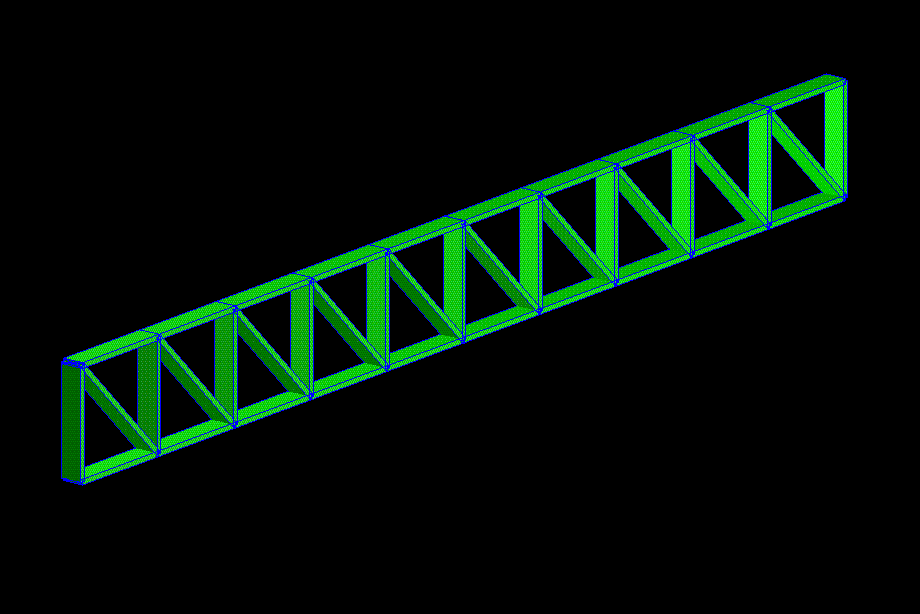
Initially, a two-dimensional version of the truss was used for analysis.
This consisted of 40 beams and only in-plane vibration transmission
was considered.
Optimized 2d Model of Truss
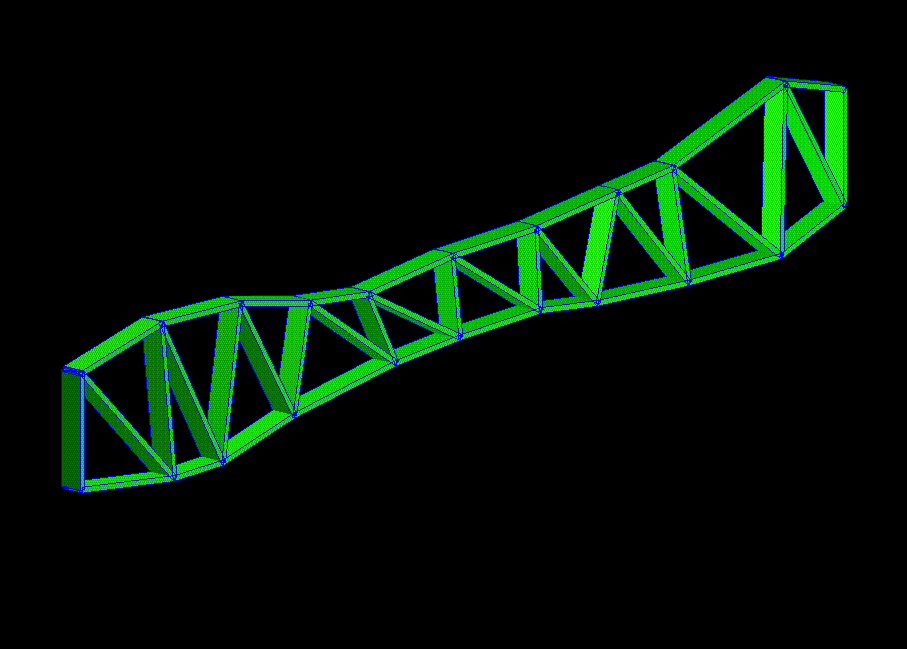
Application of the Genetic Algorithm (GA) method within the OPTIONS package, using
4500 design evaluations spread over 18 generations, produced an optimized
design with a predicted vibrational energy transmission reduced by 60dB
over a 100Hz bandwidth. The GA was run in parallel on a heterogeneous
collection of single and multi-processor workstations over a two week period.
Optimized 2d Structure on Test

A scale model of the optimal structure was subsequently built and tested
alongside a model of the non-optimized design to see if the predicted
improvements could be realised in practice.
Frequency Response of 2d Structure
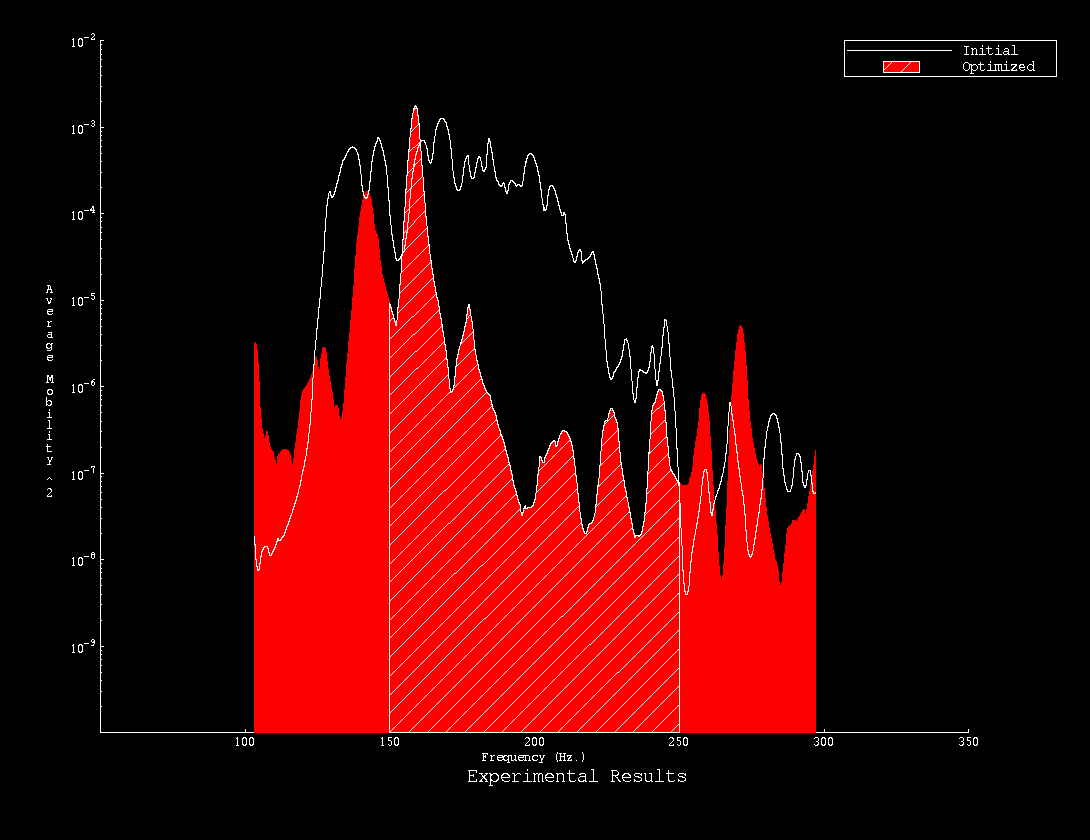
Measurements taken on the non-optimized and GA optimized designs
verified that the predicted improvements could be obtained in practice.
The correlation between theory and practice owed much to the use of
a specifically designed analysis code and careful choice of the precise quantities being
controlled by the optimizer.
Simplified 3d Model of Truss
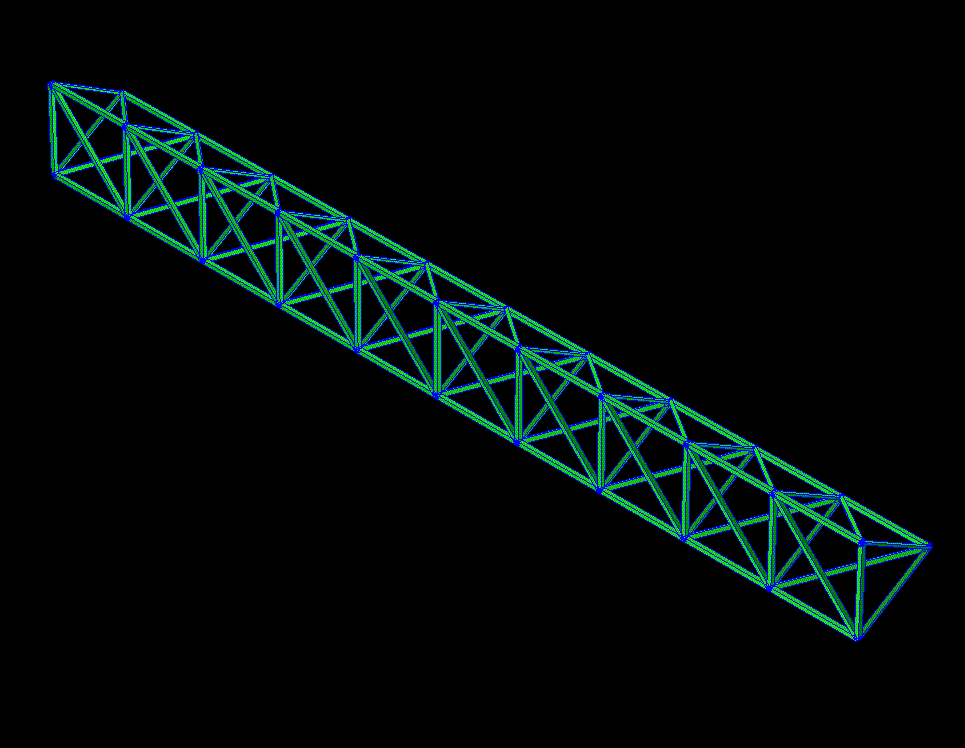
Work is now in progress on optimizing a full 3-dimensional structure,
again using a parallel, multi-workstation GA. The structure consists of 120 individual beams
and allows for bending, axial and torsional vibrations of the
structure. The analysis used has been fully validated against detailed finite
element models of the structures constructed with commercial FE codes.
Optimized 3d Model of Truss
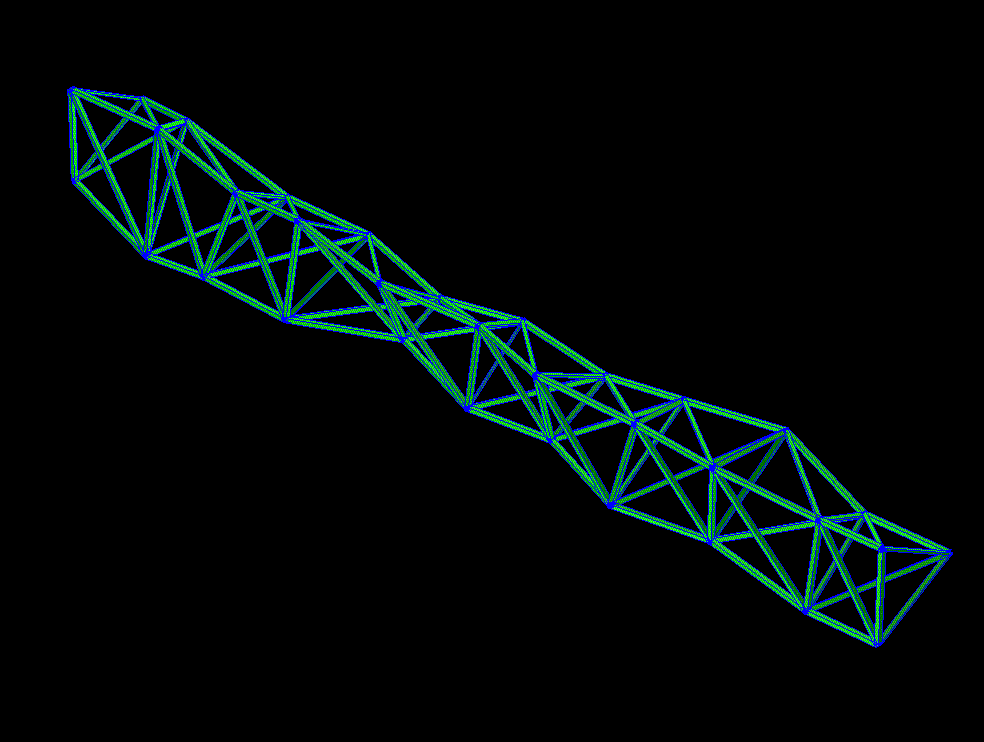
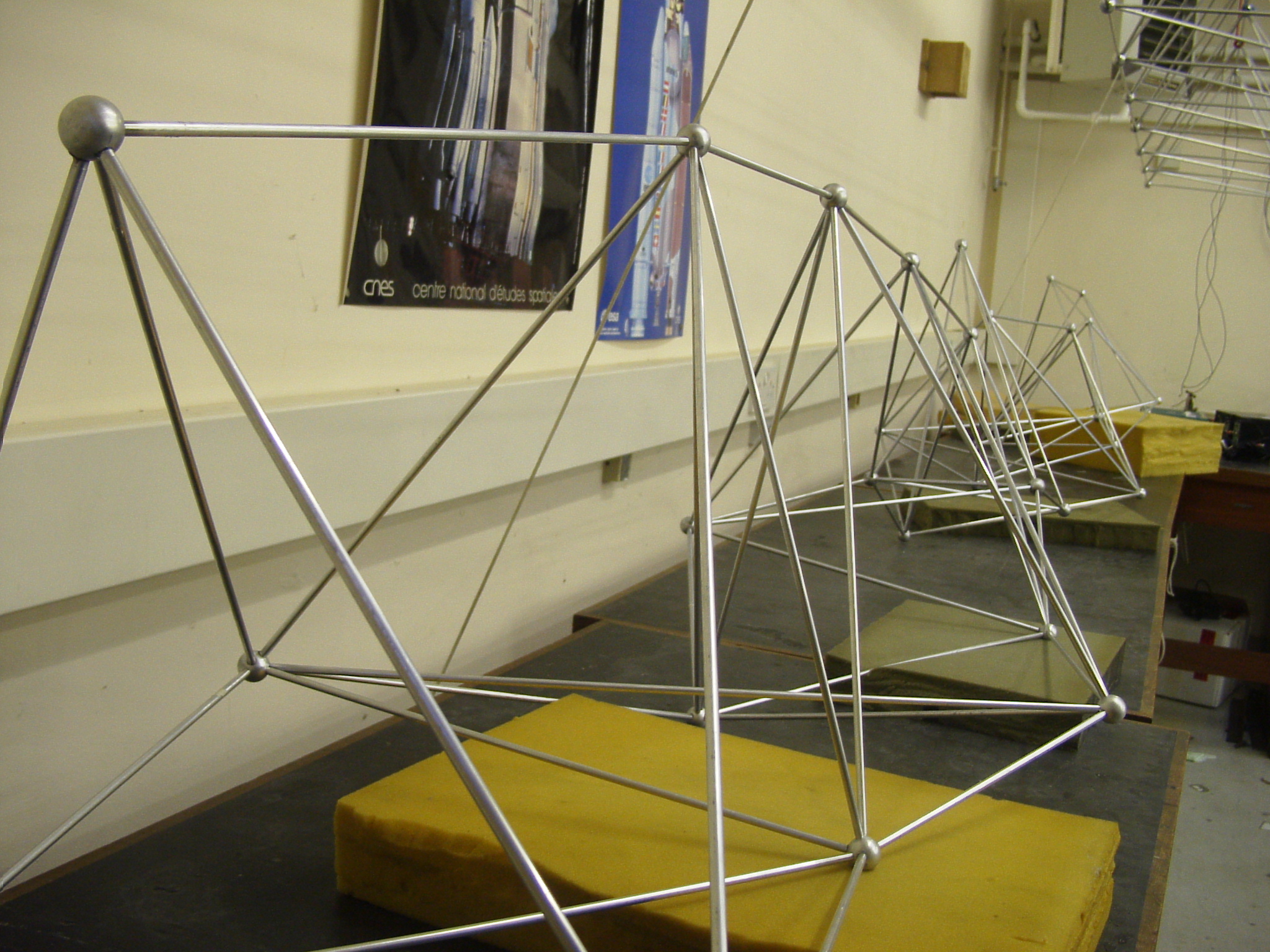
The initial designs produced by the optimization process again show significant
improvements in vibration isolation but would clearly be more difficult
to build and deploy in space than conventional designs. Nonetheless, given
that the improvements in vibration control are achieved without weight
penalties and only using passive methods, it would seem that this approach
has much to commend it.
Full references for papers describing this work and a number of related subjects may be found
on the home page of Prof. A.J. Keane (http://www.soton.ac.uk/~ajk/welcome.html ).
This article may be found at
http://www.soton.ac.uk/~ajk/truss/welcome.html









